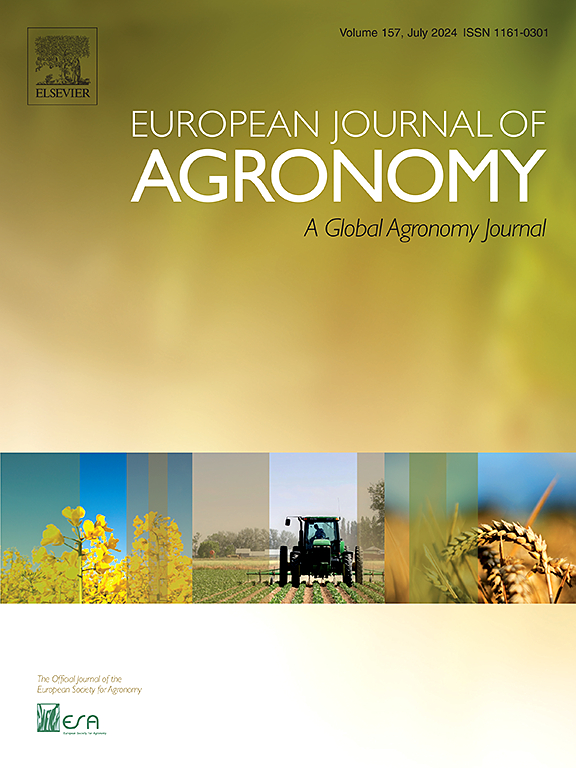Weed detection in cotton farming by YOLOv5 and YOLOv8 object detectors
IF 4.5
1区 农林科学
Q1 AGRONOMY
引用次数: 0
Abstract
Weeds are undesirable plants that pose significant challenges to agricultural crops by competing with them below and above ground. Traditional manual methods of identifying and managing weed infestations are time-consuming and labor-intensive, limiting their effectiveness. To address this problem, an experiment was conducted during kharif-2022 at Main Agricultural Research Station, University of Agricultural Sciences, Dharwad, India. The objective was to create a cotton-weed dataset of Indian cotton production system and to evaluate the performance of YOLO (You Only Look Once) object detection models. High-resolution images were captured using a digital camera mounted on a tripod stand, positioned vertically downward at a height of 80 cm. A dataset of 2300 images was created accompanied by 44130 bounding box annotations of two weed classes (grasses and broad-leaf weed) and a crop class i.e. Cotton. 12 state-of-the-art YOLO object detectors of two versions (YOLOv5 and YOLOv8) were evaluated. The algorithms demonstrated promising results, with detection accuracy ([email protected]) ranging from 69.88 % (YOLOv8n) to 76.50 % (YOLOv5s6). YOLOv5n (3.07 ms inference time) was the fastest model. Additionally, it had lower number of model parameters (1.7 million) and GFLOPs (4.1) making it suitable for real-field applications in resource-constraint conditions. Other YOLO models also exhibited significant potential for real-time weed detection. The study underscores the capabilities of YOLO object detectors for real-time weed detection in cotton. The models can be implemented on specialized computing hardware, for integrating into a robotics and sensor platform for real-time weed identification enabling targeted herbicide application, reducing chemical use, and enhancing crop yields.
求助全文
约1分钟内获得全文
求助全文
来源期刊

European Journal of Agronomy
农林科学-农艺学
CiteScore
8.30
自引率
7.70%
发文量
187
审稿时长
4.5 months
期刊介绍:
The European Journal of Agronomy, the official journal of the European Society for Agronomy, publishes original research papers reporting experimental and theoretical contributions to field-based agronomy and crop science. The journal will consider research at the field level for agricultural, horticultural and tree crops, that uses comprehensive and explanatory approaches. The EJA covers the following topics:
crop physiology
crop production and management including irrigation, fertilization and soil management
agroclimatology and modelling
plant-soil relationships
crop quality and post-harvest physiology
farming and cropping systems
agroecosystems and the environment
crop-weed interactions and management
organic farming
horticultural crops
papers from the European Society for Agronomy bi-annual meetings
In determining the suitability of submitted articles for publication, particular scrutiny is placed on the degree of novelty and significance of the research and the extent to which it adds to existing knowledge in agronomy.
 求助内容:
求助内容: 应助结果提醒方式:
应助结果提醒方式:


